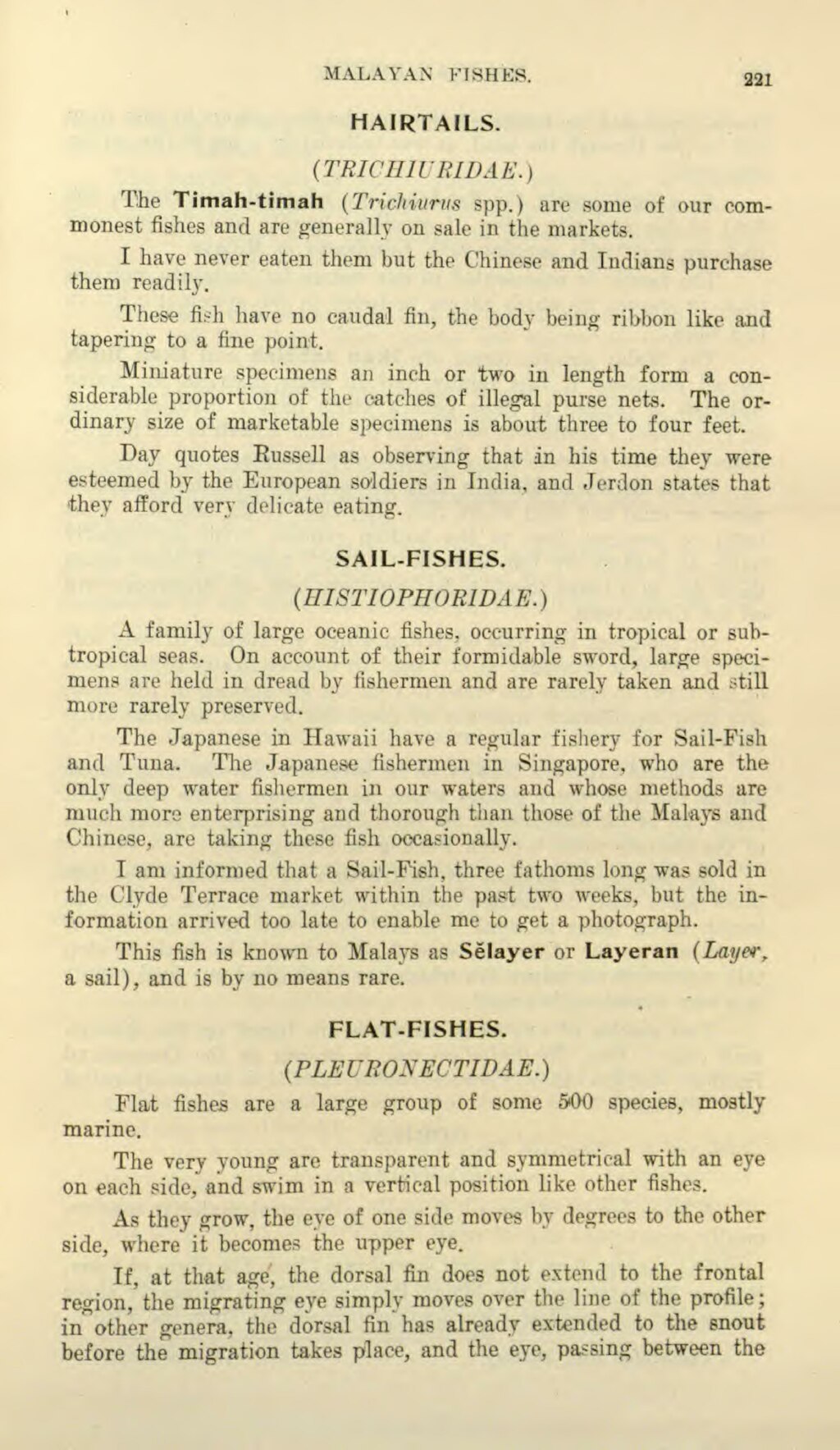HAIRTAILS.
(TRICHIURIDAE.)
The Timah-timah (Trichiurus spp.) are some of our commonest fishes and are generally on sale in the markets.
I have never eaten them but the Chinese and Indians purchase them readily.
These fish have no caudal fin, the body being ribbon like and tapering to a fine point.
Miniature specimens an inch or two in length form a considerable proportion of the catches of illegal purse nets. The ordinary size of marketable specimens is about three to four feet.
Day quotes Russell as observing that in his time they were esteemed by the European soldiers in India, and Jerdon states that they afford very delicate eating.
SAIL-FISHES.
(HISTIOPHORIDAE.)
A family of large oceanic fishes, occurring in tropical or subtropical seas. On account of their formidable sword, large specimens are held in dread by fishermen and are rarely taken and still more rarely preserved.
The Japanese in Hawaii have a regular fishery for Sail-Fish and Tuna. The Japanese fishermen in Singapore, who are the only deep water fishermen in our waters and whose methods are much more enterprising and thorough than those of the Malays and Chinese, are taking these fish occasionally.
I am informed that a Sail-Fish, three fathoms long was sold in the Clyde Terrace market within the past two weeks, but the information arrived too late to enable me to get a photograph.
This fish is known to Malays as Sělayer or Layeran (Layer, a sail), and is by no means rare.
FLAT-FISHES.
(PLEURONECTIDAE.)
Flat fishes are a large group of some 500 species, mostly marine.
The very young are transparent and symmetrical with an eye on each side, and swim in a vertical position like other fishes.
As they grow, the eye of one side moves by degrees to the other side, where it becomes the upper eye.
If, at that age, the dorsal fin does not extend to the frontal region, the migrating eye simply moves over the line of the profile; in other genera, the dorsal fin has already extended to the snout before the migration takes place, and the eye, passing between the
